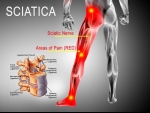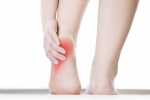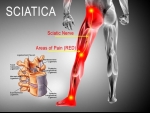Home »
Blog » Pain Management
| Stem Cell, PRP, Acupuncture in Queens & Long Island, New York
Pain Management | Stem Cell, PRP, Acupuncture in Queens & Long Island, New York
Pain is one of a series of sensory systems in the human body, including the visual system (sight), the auditory system (hearing), the olfactory system (smell), the gustatory system (taste), and the somatosensory system (touch). While many consider pain to be a part of the somatosensory system/touch system, actually pain has its own dedicated pathways in the body and spinal cord, as well as its own unique areas in the brain. This makes sense when you think of what the purpose of the pain system is.
Read more
Engaging in a routine yoga program targeted to treat scoliosis may help reduce the severity, correct your spinal posture, and/or improve balance. To help you kickstart a yoga routine, here are 4 easy yoga poses that you can try at home with a yoga mat or a thick towel. It is important to start slow and easy, and as with any exercise, always check with your doctor or therapist first.
1. Mountain Pose - This is a great pose for beginning your yoga practice. It helps with balance and core strength, and it is a pose that requires you to stand tall and steady, like a mountain.
Read more
Set Yourself Up for Success - Although you may be able to get your work done at a cramped desk, in poor light, or while you peer at a far-away computer screen, none of these things is great for your body. When you hold yourself in awkward positions, you may get problems with your muscles, tendons, ligaments, or nerves. If you already have a condition like arthritis or diabetes, you may be at higher odds of that happening.
Read more
Pain is inevitable; suffering is optional. Let’s take a closer look at this old adage. One of the things that makes pain different when compared to other sensory systems, such as vision, hearing, and touch, is that pain is often directly associated with suffering. While you can get annoyed with a bright light, or irritated with an annoying sound, pain is unique in that prolonged experience with pain in most cases results in at least some degree of distress or suffering. Suffering by its nature encapsulates negative affective or emotional phenomena. A brief look at synonyms for suffering is telling: distress, anguish, hardship, torment, and adversity.
Read more
A strong and supple spine can help make your activities of daily life more comfortable and less painful. Take time to treat your spine to several of these 11 indulgences and make your favorite ones a part of your everyday routine:
1. Make Exercise A Lifestyle - Exercise is essential when it comes to maintaining a healthy spine and it can also aid in the rehabilitation of an injured spine.
Read more
Fear and pain are closely related. The more you fear pain, the worse the pain gets. Learn how eliminating fear can help to relieve real physical pain. Chronic pain tends to have an element of fear attached to it because its unpredictability and inherent unpleasantness have taught us to be wary. The greater the fear, the more our brain and bodywork to keep us in ‘fight or flight mode. This saps our body of healing resources, directing our energy for combat or evasion against possible threats instead. We become hypervigilant, and start to pay extra attention to bodily sensations, especially painful ones.
Read more
Lumbar radiculopathy, commonly called sciatica, is a term that describes symptoms of pain, numbness, and/or weakness that originate in the lower back and radiate along the sciatic nerve into the buttock, thigh, and leg, sometimes including the foot. Sciatica is uncommon in pregnancy and usually does not occur as a result of the growing fetus or bodily changes that take place at the time. However, the symptoms may be experienced due to other underlying medical conditions.
Read more
Most Common Cause of Heel Pain Do your feet hurt when you take those first steps in the morning? Does the sharp pain come back after you sit or stand for a while? You could have plantar fasciitis -- and if so, it’s a good idea to treat it ASAP. If you ignore it, it can change the way you walk and lead to knee, hip, and back problems.
Read more
The importance of journaling is mostly underrated. Learn more about journaling and how it can be used to assist in managing chronic pain.
What is Journaling? Journaling is one method you can use to take stock of your thoughts and feelings. This usually comes with the intention of working through them in a positive direction. Like meditation, it is a mindfulness-oriented intervention. When used correctly, it can be a therapeutic treatment that fosters awareness and acceptance.
Read more
The burning pain and heaviness that you feel in your leg from sciatica can be debilitating. While sciatica symptoms typically resolve without the need for intense medical treatment, it may take over a month for the pain to subside, limiting your ability to perform daily activities. Several self-care methods can be tried at home to relieve sciatica. While some treatments help provide temporary relief irrespective of your medical diagnosis, others target the underlying cause directly relieving the symptoms and preventing future recurrences. This blog provides insights on several such at-home remedies for sciatica pain.
Read more
Love this Post? Spread the World






















